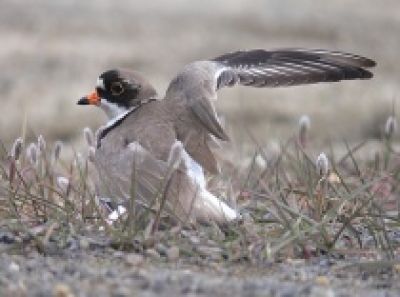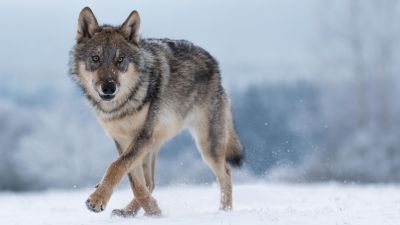Turtles originated more than 200 million years ago during the Triassic Period but three-quarters of turtle species today are endangered. One reason why May 23 was declared World Turtle Day in 2000. There are only around 356 species of turtles worldwide which Jindřich Brejcha, a zoologist at the Faculty of Science, points out is a fairly low number compared to mammals (more than 5,000) or and squamata (scaled reptiles, more than 10,000).
“Turtles, as a phylogenetic group, are most likely in state of certain evolutionary stagnation; one reason there are fewer species could be because their body plan proved so effective and provides many advantages. Because of natural selection and evolutionary changes, such as the shell or a uniquely balanced physiology, turtles can tolerate huge changes in their environment: they can survive long periods without food or can even months without oxygen.
How varied are habitats in which we can find turtles today?
Turtles are found in some of the hottest places on Earth: the desert tortoise (Gopherus agassizi) lives in California’s Death Valley. In Canada, the painted turtle (Chrysemys picta) can be frozen several months in the ice and wake up in the spring and continue on as normal. The European pond turtle (Emys orbicularis) is probably the most widespread freshwater turtle; the northernmost turtles are sea turtles such as the Leatherback sea turtle (Dermochelys coriacea) which travels as far as the 70th parallel, in the Arctic Circle.
What is a limiting factor for turtles is that they need to hatch eggs. Turtles clutch their eggs which means, obviously, they don’t lay eggs in northern Norway or on the coast of the Labrador Sea but swim to warmer climes. Temperatures between 25 and 35 degrees Celsius are appropriate for successful incumbation.
Turtles are not very well off at the moment are they.
Not really. Three-quarters of turtle species are on the ICUN Red list. One-third are endangered, critically endangered or close to extinction. Extinction threatens every type of sea turtles. The situation is most severe in the Indian Ocean where there are many areas where they have already completely disappeared.
Are humans the main cause?
There are multiple reasons but human activity is probably the most significant factor, whether you are talking about poaching, smuggling, as well as changes to the environment and global warming. There is an impact on climate, the shrinking of natural habitats and other negative effects on biotopes. There is a great number of influences. There is a lot of effort to help turtles but often it either it comes up short or is not done properly. Human beings think too highly of themselves and too little of Nature.
Are there any turtle species in the Czech lands?
The European pond turtle used to be at home here but it is possible that as far back as the Bronze Age the turtles’ numbers here were dramatically reduced. The last mention of this particular turtle in Bohemia dates back to the Middle Ages according to a study by Široký, Stuhlík and Moravec. Back then, turtles were a replacement for meat during Lent, and that is one reason this turtle may have disappeared from this area. We know at that time turtles were also imported.

Hawksbill sea turtle (Eretmochelys imbricata) are large turtles that are critically endangered (Photo: Marcela Justiánová, www.morskezelvy.cz).
In nature, is it possible to say that the rear-eared slider (Trachemys scripta) is the most well off?
That’s not certain. Humans spread the painted turtle to all continents except Antarctica. But in some areas the populations are enormous and the turtle’s spread contributes to the drop in population numbers of original local species. The release of pet painted rear-eared sliders into the native area may have led to a drop in the genetic diversity of former populations of this species. It’s interesting that no one as yet has tested the diversity of non-indigenous turtle species, how many sources there were, where they came from, who bred these specimens into the wild and made a profit and what kind of effect it had on the domestic turtle populations. For a biologist there may be an upsideto this natural disaster: people who released the animals into the wild basically laid the grounds for a global transplant experiment!

The painted turtle (Photo: Jindřich Brejcha).
Turtles are long-lived, yet I can’t think of anyone who didn’t want to have them at home as kids…
That’s true. Turtles became popular as pets in the 20th century with more and more people getting aquariums or terrariums at home. Since the 1980s, their popularity was raised by the animated series Teenage Mutant Ninja Turtles. We all wanted our own Rafael or Leonardo and turtles are so cute when they break out of their egg. Why, is a question for a long discussion: they have short “snouts”, eyes facing forwards which gives them a little “face” and then there is their home on their back (smiles).


Left: The European pond turtle (Emys orbicularis) – first steps for a newborn (Photo: Jindřich Brejcha). Right: Hermann's tortoise (Testudo hermanni hermanni). (Photo: Jindřich Brejcha).
Do you have any at home?
When I was a kid I had a Horsfield's tortoise which they used to import in droves from the former Soviet Union. Now I have some sliders nobody wanted. I would like to have many but I know I cannot. They’d suffer, I wouldn’t have enough time and they need to be cared for properly. They also take a lot of space. Turtles are not pets for kids. They need a lot of care and they live for decades.
Do we have many experts on turtles in the Czech Republic?
We have some important ones I could list: there’s Nataša Velenská, who chairs the KCHZ, an organisation dedicated to breeding and keeping turtles, there is Petr Velenský, in charge of reptiles at Prague Zoo, there is the Czech Herpetological Society. I would also mention biologist Hana Svobodová, who completed her studies at the Faculty of Science at Charles University and is working fulltime on a project to protect sea turtles. I am a really big fan of what she is doing.
As a scientist, what interests you about turtles?
In my bachelor’s and master’s I set to out to map the presence of the slider turtles in the Czech Republic and find out whether they were reproducing. My supervisor then was Martin Šandera, who is know based at the Polabí Museum. I became all the more interested in turtles and continued with their coloration with Dr. Karel Kleiser, morphology and behaviour. Turtles are great!
How can the rest of us contribute to turtle protection?
It’s possible to donate or to volunteer in existing projects. There’s a lot of emphasis now on Asia and Africa, but protection needs to be implemented around the world… A start is if more people take the time and gauge the impact of their actions on nature. Then, if they really want to help, to join in volunteering or donate to organisations.
What did you plan for World Turtle Day this year?
To transfer my turtles to a secure outside enclosure where they’ll now be able to enjoy the sunshine.

Big-headed turtle (Platysternon megacephalum) – a threatened species in southeast Asia and southern China with unknown taxonomy.(Photo: Jindřich Brejcha).
| Jindřich Brejcha, PhD. |
| Jindřich Brejcha is a zoologist at the Department of Philosophy and History of Science at Charles University. In high school Brejcha became interested in biology and considered became a biology/geography teacher before discovering he loved research even more. He is preparing a research project on how turtles communicate, the effects on aging on their coloration and behaviour, as well as how the animals learn and play. |























